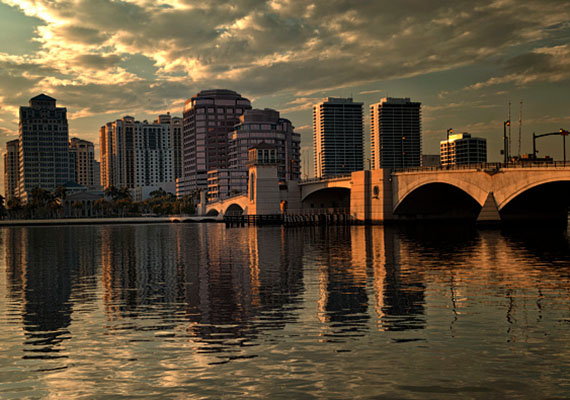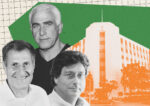Trending
Attracting new businesses and millennials key to West Palm Beach’s growth: panel

Panelists at a real estate development and investment forum in West Palm Beach on Friday underscored the city’s success in attracting new businesses and millennials, but pointed out that a lack of available commercial space and traffic problems are impediments to continued economic growth, sustainability and quality of life.
“You’ve seen all the cranes and construction activity in West Palm Beach,” said Mark Pateman, managing principal for Palm Beach County at Cushman Wakefield. “Those cranes are not building commercial space,” he told attendees at the conference organized by the Urban Land Institute Southeast Florida/Caribbean, held at the Hilton West Palm Beach.
Pateman said that the city’s commercial space is virtually full. Contributing to this, there have been no major new office buildings developed since 2008. Also, tenants moving into office buildings in past years often have expanded to take over available space in existing buildings, and office tenants in Palm Beach have relocated to West Palm Beach. The number of new tenants in the area has been relatively small. “I hope developers build more office space here,” he said.
Pateman and other speakers noted that West Palm Beach was a prime example of “the Florida story,” which includes nice weather, an expanding economy, low taxes, excellent restaurants, good schools and an attractive range of cultural, artistic and recreational offerings. The city welcomes new business, helps speed up permitting and sometimes provides financial help to upgrade infrastructure for projects.
It already ranks as one of the country’s most attractive cities, the panelists said. But to remain competitive among other Florida cities, as well metropolitan areas throughout the country looking to attract new business, West Palm Beach must add new commercial space and advance other initiatives like improving mobility.
While not suffering from Miami’s gridlock, urban traffic congestion is a serious problem in West Palm Beach. Some forum attendees got a taste of the morning traffic headache as they drove to the Hilton along crowded Okeechobee Boulevard, a main east-west artery in the city.
Two ongoing projects will be “game changers” for the city, panelists said. Replacement of the Flagler Memorial Bridge linking West Palm Beach to the Town of Palm Beach is close to completion and will alleviate traffic between the two municipalities.
Also, Brightline – the privately developed fast express train that will link Orlando and Miami – is scheduled to begin service in late July between West Palm Beach, Fort Lauderdale and Miami, relieving some drivers of the nightmare traffic on I-95 at peak travel hours. The line to Orlando is still under development.
This new express service should help change the public’s perception about riding a train and is expected to impact auto traffic between the two cities.
To address downtown traffic problems directly, speakers said, the city needs to develop new public transit options and encourage people to bike, walk, carpool and share rides.
And adding new space to existing streets — a traditional remedy across the country — is not the answer. “Expanding roadways is the equivalent of buying bigger pants to deal with a weight problem,” said Nick Uhren, executive director of the Palm Beach Metropolitan Planning Organization. “We need to encourage people to walk, bike and ride public transit,” he said. “Not just drive.”
One company, pg3m’s Skybike, is aggressively promoting bicycle rentals in West Palm Beach. “We have 14 downtown locations and 150 bikes,” said Chris Hall, pg3m’s marketing and project manager. “Skybike is a first- and last-mile alternative, and renting a bike for 30 minutes costs less than a bus ride,” he said. The company is planning to expand and is encouraging people to use the colorful bikes for moving around the downtown area.
One of the revitalization projects discussed at the forum was The Warehouse District. This ongoing initiative is redeveloping a series of old industrial warehouses on 85,000 square feet southwest of downtown West Palm Beach and close to the city center, said William Earl, vice president of development for The Warehouse District.
The project, coming on stream in stages, will include a brewing company, retail markets, shared workspaces, a squash court, fitness center, an urban garden and a courtyard with green space, public art and murals.
Charles Cohen, president and CEO of Cohen Brothers Realty Corp., described an impressive redevelopment of the old Carefree Theater and adjacent property on South Dixie Highway that covers two blocks.
The project involves converting the theater into six auditoriums to screen classic and artistic films. Cohen, a developer and film producer who owns the Design Center of the Americas in Dania Beach and has carried out iconic projects in New York City over the last 40 years, said that the Carefree project will include restaurant space, rental apartments, commercial showroom spaces and underground parking. The idea is to build a new cultural destination.
Gopal Rajegowda, senior vice president at the Related Companies, shared his experience in developing new spaces for businesses at the Houston Yards redevelopment in New York City. These commercial developments often are large spaces with high ceilings, plenty of daylight and “edgy” designs — far different from office spaces (cubicles and offices) that were common years ago.
“By 2050, predictions are that 70 percent of people in the world will live in urban environments,” Rajegowda said.
And cities need to attract and retain creative, millennial talent. “Companies ask, where do my employees want to be?” he said. Some of the main features that companies and employees want when they consider setting up a new business or relocating include easy access to a mixed-use environment; good food, beverage and retail options; exciting art and cultural setting; cool architecture; great schools; transportation options, and a vibrant public environment, Rajegowda said.




